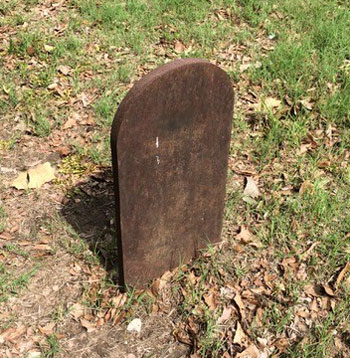
Photo taken by author, Carol Taylor.
Next weekend we celebrate what is now known as Memorial Day. But in the not so long ago, it was Decoration Day, at least in rural Texas. Today the holiday honors all those who lost their lives in defense of our country. And in 1971 it became a national holiday on the last Monday in May.
The outing began in southern states where families gathered at the local cemetery to clean up debris from spring storms, straighten tombstones, scrape grass off the graves, and enjoy a delicious dinner on the ground. It was a time to honor those who went before them. May 30th was always Decoration Day. To a certain extent Decoration Day or Memorial Day are celebrated in similar ways today. We no longer cut the grass but often place flowers on the graves, straighten the markers and clear out debris, and spend a time of silence remembering our loved ones. A few tears may be shed. Women may no longer bring fried chicken, green beans and new potatoes, along with a wide variety of pies and cakes. But whole families gather under the tabernacle or gathering place to hear a brief religious talk or listen to someone talk about local history.
Several times over the past few years Brigham Cemetery and the Merit Cemetery asked me to give a short history of the cemeteries, something interesting about special persons buried there, or the founding of the cemetery. This year I will talk about some interesting and very early events that occurred in the area around Dunbar Creek northeast of Brigham Cemetery. Because most rural cemeteries have a cemetery association, the business meeting precedes or follows my talk. Nobody pulls weeds, or scrapes grass of the graves and unfortunately there are no delicious cakes.
Why does anyone want to clear a grave of grass? The late Terry G. Jordan answered that question in his book Texas Graveyards: A Cultural Legacy (University of Texas Press, 14). The late Fred Tarpley lived near Campbell and taught folklore at East Texas State University. When he asked the same question to an older person here in Northeast Texas, the reply was,
“Grandpa killed himself keeping the weeds out of this cotton, and we’re not about to let them grow on his grave now.”

Visiting a cemetery in a town or city will not reveal any scraped graves. Graves covered with rocks or shells can be found only at rural cemeteries. But Jordan tells us almost any cemetery visited in Texas will have tombstones or markers facing east and west. The old-timer will say when “Jesus comes, He is going to come from the east and that way, when people rise up to meet Him, they will be facing him.” Yet a grave facing north or south, and supposedly there are two at Shady Grove Cemetery are rare. The deceased probably did something bad, like killing someone or stealing a horse.
I have routinely visited rural cemeteries looking for rare grave markers more than a century old. I prefer ones that a loved one created, one that may not have a name or date because it is so old, or simply a cairn or pile of sandstone rocks like I found in a family cemetery in Jack County. And while there may be little information on the marker, the condition, the age, the location indicate a story about that person. Take the time to try it.

My Grandmother used to be a caretaker of a cemetery up north in her retirement. When I would visit, she was the go to as she had the ancient blueprint maps. She was meticulous in updating those maps. When she died, the cemetery association came and picked up the tubes that housed those precious plot maps. She found plots that were not plotted. She also found mistakes on the maps. Many times my Grandmother saved the cemetery association from making “grave” mistakes, literally! There is so much work behind the scenes in making a pleasant visit to the cemetery.
Next time I visit any cemetery, I will take note of the headstones facing a different direction. That is very interesting!
About thirty years ago I discovered a beautiful memorial for a young girl in one of our local city-owned cemeteries. The girl died in the early 20th century. Because her name was Rose, the family chose a monument decorated with roses in full bloom, planted a lovely rose bush beside the grave and surrounded their special place with a wrought iron fence. About fifteen years ago, I noticed the fence was gone, then the rose bush disappeared, and now all that is left to remember Rose is her tombstone. So you have to wonder….did someone steal the fence and rose bush, or was it eliminated as a deterrent to mowing the grounds easily and quickly?